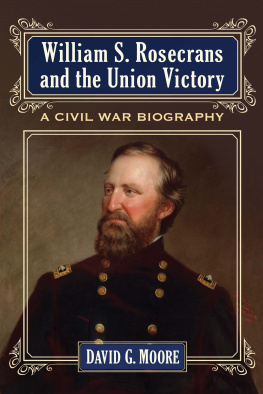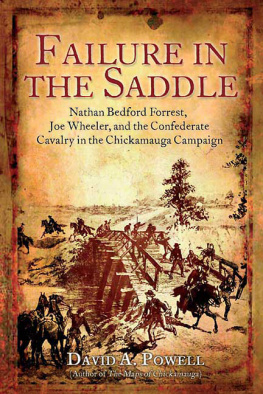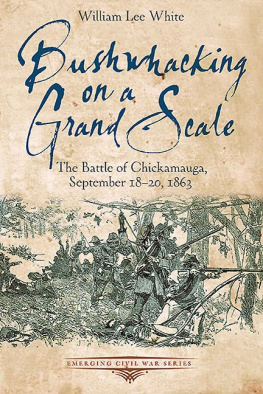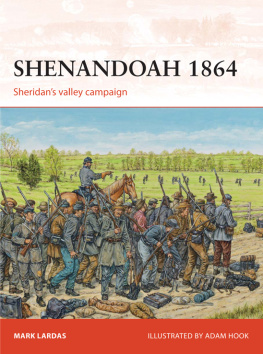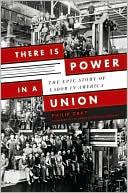
This edition is published by PICKLE PARTNERS PUBLISHINGwww.picklepartnerspublishing.com
To join our mailing list for new titles or for issues with our books picklepublishing@gmail.com
Or on Facebook
Text originally published in 1989 under the same title.
Pickle Partners Publishing 2015, all rights reserved. No part of this publication may be reproduced, stored in a retrieval system or transmitted by any means, electrical, mechanical or otherwise without the written permission of the copyright holder.
Publishers Note
Although in most cases we have retained the Authors original spelling and grammar to authentically reproduce the work of the Author and the original intent of such material, some additional notes and clarifications have been added for the modern readers benefit.
We have also made every effort to include all maps and illustrations of the original edition the limitations of formatting do not allow of including larger maps, we will upload as many of these maps as possible.
COMMAND AND CONTROL MECHANISMS IN THE CHICKAMAUGA CAMPAIGN: THE UNION EXPERIENCE
By
Major Philip J. Baker Jr., USA
TABLE OF CONTENTS
Contents
TABLE OF CONTENTS
REQUEST FROM THE PUBLISHER
ABSTRACT
This thesis analyzes how Major General William S. Rosecrans, commander of the Army of the Cumberland, employed the command and control mechanisms available to him as he maneuvered his army from Tullahoma, Tennessee toward Chattanooga, Tennessee in August-September, 1863. It also analyzes how these mechanisms were employed during the battle of Chickamauga itself, on 19-20 September, 1863.
General Rosecrans possessed three mechanisms for commanding and controlling his army. The first was the military telegraph, provided by the quasi-military U.S. Military Telegraph service. Next were the assets of the fledgling U.S. Signal Corps, which consisted of signal flags and torches, and a portable version of the telegraph. Finally, there were couriers, who were usually mounted, and were provided by subordinate unit details, or by units specifically formed for courier duty.
The thesis concludes that General Rosecrans did not use his command and control mechanisms effectively. Rosecrans relied too heavily on couriers to carry messages over densely wooded, cross-compartmented terrain in order to send orders to his widely dispersed subordinates and receive information from them. While Rosecrans made wide use of the military telegraph, to include using it during the battle itself, he did not effectively use his Signal Corps assets. These assets were used essentially as static observation posts, and only to a limited degree as a means for effecting command and control.
The thesis further concludes, however, that General Rosecrans use of command and control assets was not a decisive factor in the outcome of the campaign or battle. While his reliance upon courier assets added significantly to the time required to obtain information and send orders, it was not the reason for the Union defeat at Chickamauga.
LIST OF FIGURES
FIGURE 1. TULLAHOMA TO THE TENNESSEE RIVER
FIGURE 2. TENNESSEE RIVER TO LOOKOUT MOUNTAIN
FIGURE 3. LOOKOUT MOUNTAIN TO THE WESTERN AND ATLANTIC RAILROAD
FIGURE 4. CHICKAMAUGA BATTLEFIELD
CHAPTER 1INTRODUCTION
This thesis will analyze the functional aspects of the command and control mechanisms used by the Unions Army of the Cumberland during the campaign and battle of Chickamauga, August-September 1863. It will do so in order to determine how effectively these mechanisms were used and to establish what affect they had on the outcome of the battle. The Commanding General of the Army of the Cumberland was Major General William S. Rosecrans. The command and control mechanisms available to him included the telegraph, the signal flag, and the courier. How he used these assets, in combination, to acquire information and to direct subordinates is the primary focus of the thesis. The internal operations of the Commanding General with his own staff will not be an object of investigation, but rather the interfacing of the Commander and staff with the environment outside the headquarters. This outside environment includes superior, adjacent, and subordinate headquarters, the terrain, and the enemy; all of which the commander must obtain information from (or about), and consequently send information to.
The following research questions will be investigated:
(1) What mechanisms were used to facilitate command and control during the campaign and the battle? How was the decision made over which mechanism to use? How did the terrain affect the choice of mechanism?
(2) What was the effect of each mechanism upon the outcome of the campaign and battle? Did the use of any particular mechanism provide a decisive edge?
(3) What observations can be drawn from this historical example with regard to command and control in todays environment?
The thesis will analyze three different time periods. The first covers the interval from August 16 through August 29, as the Army moved from the vicinity of the Elk River, below Tullahoma, Tennessee, toward the Tennessee River. This period found the army split into at least ten major columns moving through cross-compartmented terrain across the Cumberland Plateau and Waldens Ridge. The lateral spread of Rosecrans army approached 80 miles at some points. Of particular note is the movement of Rosecrans left-most unit, the XXI Corps, under Major General Thomas Crittenden. This corps was widely separated from the rest of the army and severely tested the command and control system. The next period of interest is from the crossing of the Tennessee River until the consolidation of Rosecrans three corps near McLemores Cove and Lee and Gordons Mill. These actions cover the interval from August 29 through September 17. Again, Rosecrans dispersed his units over a wide front, over densely wooded, cross-compartmented terrain in an effort to cut Braggs lines of communication. During this phase, Major General Alexander McCooks XX Corps was widely separated from the remainder of the army, a circumstance which almost proved disastrous. The geographic area covered by the army during this period was less than in the previous phase. However, due to the proximity of the enemy, there was an inherent requirement for reaction time to improve. Reaction time in this sense refers to the time spent in acquiring information, deciding what to do, transmitting orders to subordinates, and then ensuring that those orders are being properly executed. Improving reaction time might today be referred to as getting inside the enemys decision cycle.
The final phase consists of the preparations for, and the conduct of, the battle itself. A comparison of the mechanisms used here versus those used in the previous two phases will provide significant insights, particularly since the timeliness requirement for acquiring information and issuing orders was the most demanding during this phase.
The initial intent of the thesis was to compare the mechanisms used by the opposing Commanding Generals (i.e., Major General Rosecrans, Army of the Cumberland, and General Braxton Bragg, Army of Tennessee). It has been determined, however, that adequate data on the mechanisms used by the Army of Tennessee do not exist in sufficient detail to make an acceptable comparison.




